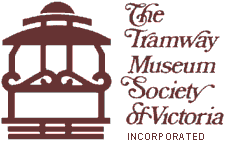
| About TMSV | Visitor information | Our collections |
Current projects | Feature articles | Join TMSV | Useful links | TMSV news |
 |
|||||||||
|
|||||||||
GunzelsThis article is an edited version of a Trams Down Under posting made by Don Campbell on 2 January 2004. The origin of the term ‘gunzel’ as applied to tramway enthusiasts has been discussed and questioned many times by tramway enthusiasts, as it is only used within Australia and New Zealand. But this is the real story of how this label came to be used. The usage of this term originated at the Sydney Tramway Museum in the mid-1960s. The museum was then known in those days as the South Pacific Electric Railway or SPER. There had developed a habit among a group of working members to joke among themselves in exaggerated American accents, using American slang words that were not totally understood but sounded great when spoken. The main influence was a pile of old American railway magazines called Railroad that a member had found and deposited in the museum’s meal room. The magazine was noted for its use of American railroad slang. For example, there would be a picture of a goods train guard standing beside the caboose, looking at his fob watch. The caption would read “The Brains consults his time piece, ready to give the Hogger the high-ball…” etc. “Wow, what a fantastically bizarre use of words”, we used to think, and started to use them in silly banter amongst ourselves. Other influences were American black and white movies, and a crime drama series called The Untouchables that was shown on television at the time. These were always watched avidly because you never knew when a tram might appear in the background of a scene. Words and phrases from The Untouchables were often very colourful and were added to the banter vocabulary. But the source of the word ‘gunzel’ was from its appearance in The Maltese Falcon. The ‘gunzel’ character was a weedy unhappy looking bloke who cringed when Bogart confronted him. In that 1960s-1970s period, the tram enthusiast movement had a very small proportion of its fraternity who were very conspicuous. The identifying features were shabby clothing and lousy dress-sense, at least two cameras, sometimes three, one at least usually very expensive for the times, generally carried about in an army surplus canvas gas mask bag. These people also had an encyclopaedic knowledge regarding the history and theory of tramways and trams. Once one started sharing this knowledge, other members would find their eyes starting to glaze over after about five minutes of being ‘talked-at’ by one of these people. ‘Normal’ fans would bump into them all over the place, and while being civil and nodding a greeting to them, one desperately hoped they wouldn’t get too close. It so happened at SPER one day that a prominent example of one of these individuals visited the museum on a work day, in what later became known as the full ‘gunzel’ costume and kit. The Maltese Falcon had recently been broadcast on TV (again), and a group of SPER working members looked up, saw this bloke, and one quietly commented to the others, “Uh oh, a gunzel”. The word was instantly recognised as being extremely apt and was adopted into regular use from that day on, and quietly spread through the Australian and New Zealand tram enthusiast scene. Gunzels are also an identifiable type in Britain, but are known there as ‘hairies’ or ‘gricers’. Originally, gunzel (literally ‘little goose’) was a Yiddish slang expression used to refer to catamites or male homosexuals. It crossed over into American underground slang (often spelt gunsel), and became applicable to criminals or hoodlums, especially when carrying a gun. The term had a distinctly contemptuous overtone, implying that the individual concerned is less than a real man — hence its use in The Maltese Falcon. Obviously the censors of the time (1941) had no idea about Yiddish or underground slang.
|
![]() Last
updated 3
January 2005.
Last
updated 3
January 2005.
![]() Content
copyright © Don
Campbell 2005. Reproduced with permission.
Content
copyright © Don
Campbell 2005. Reproduced with permission.